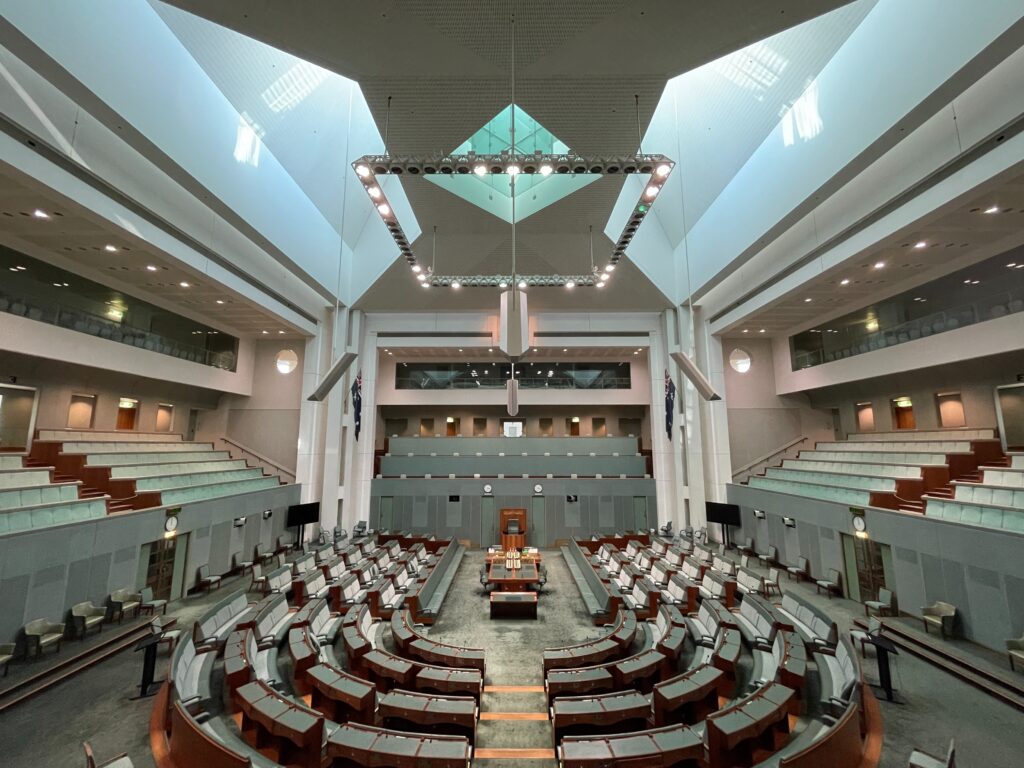When Labor leader Guff Whitlam was ousted as prime minister in 1975, the Australian Parliament passed a no-confidence motion against the government of opposition Liberal Party leader and caretaker Prime Minister-designate Malcolm Fraser.
Historically, in the parliamentary history of the Australian Parliament. On November 11, 1975, the then Governor-General of Australia, Sir John Kerr, fired Goff Whitlam, Prime Minister of the Australian Labor Party (ALP), and appointed Malcolm Fraser of the opposition Liberal Party as caretaker Prime Minister.
In 1975, the opposition, led by Malcolm Fraser, the leader of the opposition Liberal Party, used its control over the Senate, due to its majority in the Senate, to approve or block the passage of government spending bills several times. Fraser and his opposition party said they would continue to block the bills in the Senate until Prime Minister Gov. Whitlam approached the Governor-General with a proposal for new elections to the House of Representatives.
Advice of Prime Minister Goff Whitlam
In July 1974 on the advice of Prime Minister Goff Whitlam. The prime minister was of the opinion that the governor-general nominated by him would not remove him from the post of prime minister and the governor-general himself had assured the prime minister that he did not intend to remove the government. But on November 11, 1975, the crisis escalated when Prime Minister Goff Whitlam approached Governor-General Kerr, proposing new elections for only half of the Senate seats, in an attempt to end the parliamentary stalemate.
But instead of accepting the request of Prime Minister Goff Whitlam, the Governor-General, appointed with the confidence of the Prime Minister himself, fired Prime Minister Goff Whitlam himself from the post of Prime Minister and appointed opposition leader Malcolm Fraser as caretaker Prime Minister has done. The general idea was that the newly appointed Prime Minister, Mr. Fraser, would immediately announce the general election, which he had been demanding.
Therefore, the no-confidence motion was not technically effective. Controversy over Kerr’s role was partly due to these events. And then Malcolm Fraser advised Governor-General Kerr to dissolve Parliament for new elections by double dissolution. Liberal leader Malcolm Fraser and his Liberal Alliance won a landslide victory in next month’s federal election.
The House of Representatives is divided on an issue
Parliament must vote to resolve a question. Australian Parliament parties usually vote as a team, all party members vote in the same way.
Number of Members
Members of parliamentary parties rarely cross the floor because parties expect loyalty from their team members. Crossing the floor publicly reflects differences within the party.
- His party provides support and financial security in return for his loyalty.
- His party could be banned from crossing the floor.
Vote of Conscience
A vote of conscience can be taken to prevent a Member of Australian Parliament from crossing the floor on a controversial issue that would otherwise cause embarrassment to the party, or allow the Members of Parliament to express their strong beliefs. The use of the conscience vote is diminishing.
Date
Although crossing the floor is now rare, it has happened more frequently in the past. From 1950 to 2004, 245 members of Parliament crossed the floor, representing 24% of the members of Parliament who served during that period. Senator Rig Wright from Tasmania, who served from 1950 to 1978, crossed the line 150 times. This is the most time any Member of Parliament has done so.
Tie vote
In the House of Representatives, the Speaker does not vote until the result is equal, in which case the Speaker has a casting vote to decide the matter. In contrast, the president of the Senate can always vote with other senators.
Scenario of the no-confidence motion in Akstan so far
The Chairman of the Upper House Senate performs his duties as the President of the country. But none of them has been successful.
The last two movements failed. When his government is one and a half years away from completing its term. Former Prime Minister Shaukat Aziz also faced a no-confidence motion against him. When new elections were a year and a half away.
According to the officials of the Legal Branch of the Pakistan National Assembly. According to constitutional experts, no party can stop its members from voting against or in favor of the Prime Minister. Assuming that the government sends a reference to the disqualification of the members crossing the floor to the Election Commission. Also, those members become disqualified, their disqualification will result in a lack of confidence in the Prime Minister. Due to the lack of votes of these members.

